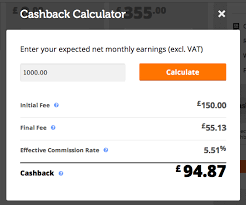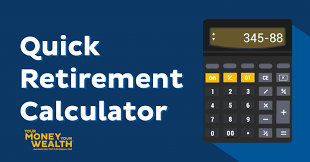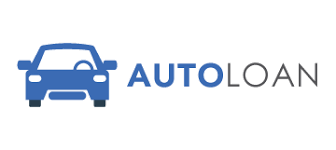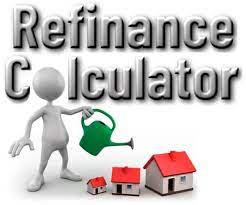Welcome to our financial toolkit featuring the Cash Back or Low Interest Calculator, helping you secure the lowest interest rates on car loans. Explore and save today!Discover how to make informed decisions and maximize your savings with our comprehensive insights.
Cash Back or Low Interest Calculator
Cash Back Offer
Low Interest Rate Offer
Other Information
Results
With Cash Back Offer
Total Loan Amount:
Sale Tax:
Upfront Payment:
Monthly Payment:
Total of Loan Payments:
Total Loan Interest:
Total Cost (price, interest, tax, fees):
With Low Interest Rate Offer
Total Loan Amount:
Sale Tax:
Upfront Payment:
Monthly Payment:
Total of Loan Payments:
Total Loan Interest:
Total Cost (price, interest, tax, fees):
[ez-toc]
What Is Vehicle Cash Rebate?
A vehicle cash rebate is a type of incentive offered by car manufacturers to encourage customers to buy their vehicles. It's a discount given to the buyer that is usually applied to the purchase price of the vehicle. The amount of the rebate varies depending on the make and model of the vehicle, as well as the time of year and other factors. Vehicle cash rebates are usually offered by dealerships in partnership with manufacturers.
How Does a Vehicle Cash Rebate Work?
A vehicle cash rebate works by reducing the purchase price of the vehicle. For example, if you're buying a car that costs $20,000 and there's a $2,000 cash rebate, the purchase price will be reduced to $18,000. In some cases, you may be able to apply the rebate to the down payment or use it to reduce the monthly payments on a car loan.
How to Take Advantage of a Vehicle Cash Rebate?
To take advantage of a vehicle cash rebate, you need to research and compare car prices and incentives from different dealerships. Look for dealerships that are offering cash rebates on the car model you're interested in purchasing. Also, keep in mind that vehicle cash rebates are usually time-limited, so you need to act fast before the offer expires.
Benefits of a Vehicle Cash Rebate
One of the biggest benefits of a vehicle cash rebate is that it can save you money on your new car purchase. It can also make the car more affordable, as the rebate reduces the overall cost of the car. Additionally, a vehicle cash rebate can help you negotiate a better price for the car, as dealerships may be more willing to offer discounts if you're already getting a cash rebate.
A vehicle cash rebate is a discount offered by car manufacturers to encourage customers to buy their vehicles. It's a great way to save money on your new car purchase, but you need to research and compare car prices and incentives from different dealerships to find the best deals. By taking advantage of a vehicle cash rebate, you can make your new car more affordable and negotiate a better price.
What Is Low Interest Financing?
If you're planning to purchase a big-ticket item like a car, home, or appliance, you might be considering financing options to help you spread out the payments. One option that you might have heard of is "low interest financing." But what is low interest financing, and how does it work? In this article, we'll explain everything you need to know about low interest financing and how it can help you save money.
What Is Low Interest Financing?
Low interest financing is a type of loan or credit agreement that offers a low-interest rate, typically below the average market rate, to borrowers. This means that you'll pay less in interest charges over the life of the loan, which can save you a significant amount of money. Low interest financing is often offered by lenders as an incentive to attract borrowers and can be a great way to finance a large purchase.
How Does Low Interest Financing Work?
Low interest financing works by offering borrowers a lower interest rate than the market average. This can be in the form of a personal loan, car loan, or home loan. The exact interest rate and terms will vary depending on the lender, the borrower's creditworthiness, and the type of loan being offered. Generally, the lower the interest rate, the lower the monthly payments will be, making the loan more affordable for borrowers.
Benefits of Low Interest Financing
There are several benefits to low interest financing, including:
Lower interest charges: With a lower interest rate, you'll pay less in interest charges over the life of the loan, which can save you a significant amount of money.
Lower monthly payments: A lower interest rate can result in lower monthly payments, making the loan more affordable and easier to manage.
Longer repayment terms: Some low interest financing options offer longer repayment terms, which can also help make the loan more manageable.
Better credit score: Successfully repaying a low interest loan can improve your credit score, which can help you qualify for better rates and terms in the future.
Cash Back Formula
we'll explain everything you need to know about the cashback formula and how to get the most out of it.
What Is the Cash Back Formula?
The cashback formula is a simple calculation that determines how much cashback you can earn based on your purchases. It's typically expressed as a percentage and can vary depending on the card issuer, the type of card, and the specific rewards program. For example, a credit card may offer 1% cashback on all purchases, while another may offer 5% cashback on specific categories like gas, groceries, or travel.
How to Calculate Your Cashback
To calculate your cashback, you'll need to know the cashback percentage offered by your credit card or retailer and the amount of your purchase. For example, if you make a $100 purchase and your cashback percentage is 2%, you'll earn $2 in cashback rewards. The formula is straightforward: Cashback = Purchase Amount x Cashback Percentage.
Maximizing Your Cashback Rewards
Here are some tips to help you maximize your cashback rewards:
Choose the right card: Look for credit cards that offer cashback rewards on purchases you make frequently.
Know the categories: Some cards offer higher cashback rewards for specific categories like gas, groceries, or dining. Be sure to take advantage of these categories when you can.
Take advantage of sign-up bonuses: Some credit cards offer sign-up bonuses that can help you earn extra cashback rewards.
Pay your balance in full: Paying your balance in full every month can help you avoid interest charges and maximize your cashback rewards.
Redeem your rewards wisely: Make sure you redeem your cashback rewards before they expire and choose the redemption option that offers the most value.
The cashback formula is a simple calculation that can help you earn cashback rewards on your purchases. By choosing the right card, taking advantage of bonus offers, and using your rewards wisely, you can maximize your savings and get the most out of your cashback rewards.
Cash Back Example
Cashback is a popular incentive offered by many credit card companies and retailers to attract and retain customers. It allows you to earn a percentage of your purchases back as cash or rewards. But how does cashback work in real life, and how can you benefit from it? In this article, we'll provide a step-by-step guide to understanding cashback examples and how they can benefit you.
What Is a Cash Back Example?
A cashback example is a real-life scenario that illustrates how cashback rewards work. It typically involves a purchase amount, a cashback percentage, and the resulting cashback reward. By understanding cashback examples, you can see how much you can save on your purchases and determine which cashback program is the best for you.
Cash Back Example: Let's say you have a credit card that offers a 2% cashback reward on all purchases. You make a $500 purchase using your credit card, and the cashback reward is automatically added to your account.
Using the cashback formula (Cashback = Purchase Amount x Cashback Percentage), you can calculate your cashback reward: Cashback = $500 x 0.02 = $10
In this example, you would earn $10 in cashback rewards, which can be redeemed for cash or other rewards.
How Can You Benefit from Cash Back Examples?
Cashback examples can help you understand how much you can save on your purchases and choose the best cashback program for your needs. By comparing the cashback rewards offered by different credit cards and retailers, you can determine which program will help you save the most money.
Here are some tips to help you benefit from cashback examples:
Look for cashback programs that offer rewards on purchases you make frequently.
Compare cashback rewards and other benefits offered by different credit cards and retailers.
Use your credit card responsibly and pay your balance in full every month to avoid interest charges.
Redeem your cashback rewards before they expire and choose the redemption option that offers the most value.
How Cashback Offers Work?
Cashback offers are a popular incentive offered by many credit card companies and retailers to attract and retain customers. They allow you to earn a percentage of your purchases back as cash or rewards. But how do cashback offers work, and how can you get the most out of them? In this article, we'll explain everything you need to know about cashback offers.
What Are Cashback Offers?
Cashback offers are incentives offered by credit card companies and retailers that allow you to earn a percentage of your purchases back as cash or rewards. For example, a credit card may offer 2% cashback on all purchases, while a retailer may offer 5% cashback on specific items or categories. Cashback offers are designed to encourage customers to make purchases and can be a great way to save money on your everyday expenses.
How Do Cashback Offers Work?
Cashback offers work by offering you a percentage of your purchases back as cash or rewards. For example, if you make a $100 purchase and your cashback offer is 2%, you'll earn $2 in cashback rewards. The cashback rewards are usually credited to your account automatically, and you can redeem them for cash, statement credits, or other rewards depending on the terms of the offer.
Types of Cashback Offers
There are two main types of cashback offers: flat-rate and tiered. Flat-rate cashback offers provide a set percentage of cashback rewards on all purchases, while tiered cashback offers provide higher rewards for certain categories or spending thresholds. For example, a credit card may offer 2% cashback on all purchases and 5% cashback on purchases in specific categories like gas, groceries, or travel.
Maximizing Your Cashback Rewards Here are some tips to help you maximize your cashback rewards:
Choose the right card or retailer: Look for cashback offers that offer rewards on purchases you make frequently.
Know the categories: Some offers provide higher cashback rewards for specific categories like gas, groceries, or dining. Be sure to take advantage of these categories when you can.
Take advantage of sign-up bonuses: Some credit cards and retailers offer sign-up bonuses that can help you earn extra cashback rewards.
Pay your balance in full: Paying your balance in full every month can help you avoid interest charges and maximize your cashback rewards.
Redeem your rewards wisely: Make sure you redeem your cashback rewards before they expire and choose the redemption option that offers the most value.
How Does Zero Percent Financing Work?
Zero percent financing is a popular incentive offered by many retailers and manufacturers to attract customers. It allows you to finance a purchase without paying any interest on the loan. But how does zero percent financing work, and is it a good option for you? In this article, we'll explain everything you need to know about zero percent financing.
What Is Zero Percent Financing? Zero percent financing is a type of loan or credit agreement that allows you to finance a purchase without paying any interest on the loan. It's often offered by retailers and manufacturers as an incentive to attract customers and can be a great way to save money on a large purchase.
How Does Zero Percent Financing Work?
Zero percent financing works by offering a loan or credit agreement with no interest charges for a set period of time. For example, a retailer may offer zero percent financing for 12 months on a purchase of $1,000 or more. You'll make monthly payments on the loan, but you won't pay any interest charges during the promotional period.
After the promotional period ends, the interest rate will typically increase to the standard rate for the loan or credit agreement. If you don't pay off the loan before the promotional period ends, you may be charged interest on the remaining balance.
Is Zero Percent Financing Right for You?
Zero percent financing can be a great option if you're looking to finance a large purchase and want to avoid paying interest charges. However, it's important to consider the following factors before signing up for zero percent financing:
Creditworthiness: To qualify for zero percent financing, you'll typically need good or excellent credit. If you don't have good credit, you may not qualify for the offer or may be offered a higher interest rate.
Payment schedule: With zero percent financing, you'll need to make monthly payments on the loan to avoid interest charges. Make sure you can afford the payments before signing up for the offer.
Fees: Some zero percent financing offers may come with fees, such as annual fees or late fees. Make sure you understand the fees associated with the offer before signing up.
Promotional period: Make sure you understand the length of the promotional period and when interest charges will start. If you don't pay off the loan before the promotional period ends, you may be charged interest on the remaining balance.
Zero percent financing can be a great option if you're looking to finance a large purchase and want to avoid paying interest charges. However, it's important to consider your creditworthiness, payment schedule, fees, and promotional period before signing up for the offer. By understanding how zero percent financing works, you can determine if it's the right option for you.
When Does Cashback Make Sense?
Cashback rewards programs can be useful in a variety of situations. Here are a few examples of when using a cashback program makes sense:
- Everyday Purchases: If you're already planning to make a purchase, it makes sense to see if you can get cashback on it. For example, if you need to buy groceries, you could use a cashback rewards card to earn money back on your purchases.
- Big-Ticket Items: When you're making a big purchase, like a new TV or a new car, cashback rewards can help offset the cost. Some credit cards offer high cashback percentages on certain purchases, so be sure to look for those deals.
- Travel: Many travel rewards credit cards offer cashback rewards on purchases like airfare, hotels, and rental cars. If you're planning a trip, using a cashback card can help you save money on your travel expenses.
- Online Shopping: If you do a lot of shopping online, using a cashback program can help you earn money back on your purchases. Some cashback programs even offer bonuses for shopping at certain retailers.
How to Maximize Your Cashback Savings
Once you've decided to use a cashback program, there are a few things you can do to maximize your savings. Here are some tips:
- Choose the Right Cashback Program: There are many different cashback programs available, so it's important to choose the one that best fits your needs. Look for programs that offer high cashback percentages, low fees, and easy redemption options.
- Use Multiple Programs: You don't have to stick to just one cashback program. In fact, using multiple programs can help you earn more cashback on your purchases. Just be sure to keep track of which program offers the best rewards for each purchase.
- Pay Off Your Balance: Cashback rewards are only valuable if you're not paying high interest rates on your credit card balance. Be sure to pay off your balance in full each month to avoid interest charges.
- Look for Bonus Offers: Some cashback programs offer bonus rewards for certain purchases or for hitting spending thresholds. Keep an eye out for these offers and take advantage of them when they make sense for you.
- Compare Cashback and Rewards: Cashback isn't the only type of reward you can earn from credit cards. Some cards offer points or miles that can be redeemed for travel or merchandise. Be sure to compare the rewards offered by different cards to find the one that best fits your needs.
How to Find a Low APR Loan or Cash Back Deal
When it comes to financing a big purchase or covering an unexpected expense, a low APR loan or cash back deal can help you save money. But how do you find the best deals? With so many lenders and financing options available, it can be tough to know where to start. In this article, we'll explore some tips and tricks for finding a low APR loan or cash back deal that works for you.
Check Your Credit Score
Before you start looking for a low APR loan or cash back deal, it's a good idea to check your credit score. Lenders use your credit score to determine your creditworthiness, which can impact the interest rates and terms you're offered. If you have a high credit score, you'll likely qualify for lower interest rates and better deals. You can check your credit score for free through several online services.
Shop Around
When looking for a low APR loan or cash back deal, it's important to shop around. Don't just go with the first lender or financing option you find. Compare rates and terms from multiple lenders to find the best deal. You can start by checking with your bank or credit union, or by using online comparison tools to get quotes from multiple lenders.
Consider Peer-to-Peer Lending
Peer-to-peer lending platforms can be a good option for finding low APR loans. These platforms connect borrowers with individual investors, cutting out the middleman and often resulting in lower interest rates. Just be sure to read the fine print and understand any fees or charges associated with the loan.
Look for Cash Back Deals
If you're not in need of a loan but still want to save money on a big purchase, consider looking for cash back deals. Many retailers and credit card companies offer cash back deals on purchases like appliances, electronics, and even cars. You can often find these deals through online shopping portals or by signing up for retailer email newsletters.
Use a Credit Card
If you're looking for a cash back deal, using a credit card can be a good option. Many credit cards offer cash back rewards on purchases, with some offering up to 5% back on certain categories. Just be sure to pay off your balance in full each month to avoid interest charges.
Negotiate Terms
When working with a lender, don't be afraid to negotiate terms. If you have a good credit score and a strong financial history, you may be able to negotiate a lower interest rate or better terms. Be prepared to shop around and have quotes from other lenders to use as leverage.
Finding a low APR loan or cash back deal can help you save money on a big purchase or unexpected expense. By checking your credit score, shopping around, considering peer-to-peer lending, looking for cash back deals, using a credit card, and negotiating terms, you can find the best deal for your needs.
FAQ
What is a low APR loan?
A low APR loan is a loan with a low annual percentage rate (APR). The APR is the interest rate plus any additional fees or charges associated with the loan. A low APR loan can save you money on interest charges over the life of the loan.
How do I find a low APR loan?
To find a low APR loan, you can start by checking with your bank or credit union. You can also use online comparison tools to get quotes from multiple lenders. Be sure to compare rates and terms to find the best deal.
What is a cash back deal?
A cash back deal is an offer that gives you money back on a purchase. For example, a credit card may offer 5% cash back on purchases made at grocery stores. Cash back deals can help you save money on everyday purchases or big-ticket items.
How do I find a cash back deal?
To find a cash back deal, you can start by checking with your credit card company or retailer. Many credit cards offer cash back rewards on purchases, and many retailers offer cash back deals on certain items. You can also look for deals through online shopping portals or by signing up for retailer email newsletters.
How do I qualify for a low APR loan or cash back deal?
To qualify for a low APR loan or cash back deal, you'll need to have a good credit score and a strong financial history. Lenders and credit card companies use your credit score to determine your creditworthiness and the interest rates and terms you're offered. Be sure to check your credit score and work on improving it if needed.
Are there any fees associated with low APR loans or cash back deals?
There may be fees associated with low APR loans or cash back deals, such as application fees, origination fees, or annual fees. Be sure to read the fine print and understand all fees and charges associated with the loan or deal before accepting it.
Can I negotiate the terms of a low APR loan or cash back deal?
Yes, you can negotiate the terms of a low APR loan or cash back deal. If you have a good credit score and a strong financial history, you may be able to negotiate a lower interest rate or better terms. Be prepared to shop around and have quotes from other lenders or offers from other credit card companies to use as leverage.
How This Cash Back OR Low Interest Calculator Works?
In this article, we'll explore how this type of calculator works and how you can use it to maximize your savings.
What is a cash back or low interest calculator?
A cash back or low interest calculator is an online tool that helps you compare the benefits of a cash back credit card versus a low interest credit card. You input your spending habits and credit card balances, and the calculator shows you which option will save you more money over time.
How does the calculator work?
The calculator works by taking into account your spending habits, the interest rates of the credit cards, and the cash back rewards offered by the cash back credit card. It then calculates the total amount of interest you'll pay over a set period of time with each option, as well as the cash back rewards you'll earn with the cash back credit card. The calculator then shows you which option will save you more money over time.
What information do I need to use the calculator?
To use the calculator, you'll need to know your spending habits, your credit card balances, the interest rates of the credit cards you're considering, and the cash back rewards offered by the cash back credit card.
How can I use the calculator to maximize my savings?
To maximize your savings with the calculator, you can try inputting different spending habits and credit card balances to see how they affect the results. You can also compare different cash back credit cards to see which one offers the best rewards for your spending habits. Additionally, you can use the calculator to determine how much you'll save over time with a cash back credit card, and use that money to pay off your credit card balances faster and save even more money on interest charges.
Are there any drawbacks to using a cash back or low interest calculator?
One drawback of using a cash back or low interest calculator is that it may not take into account all of the factors that affect your finances. For example, it may not consider any annual fees associated with the credit cards, or any changes in your spending habits over time. Additionally, the calculator may not be able to predict changes in interest rates or cash back rewards offered by the credit cards.

Cash Back or Low Interest Calculator - Lowest Interest Rates on Car Loan
Legal Notices and Disclaimer
All Information contained in and produced by the ModernCalculators.com is provided for educational purposes only. This information should not be used for any Financial planning etc. Take the help from Financial experts for any Finace related Topics. This Website will not be responsible for any Financial loss etc.





